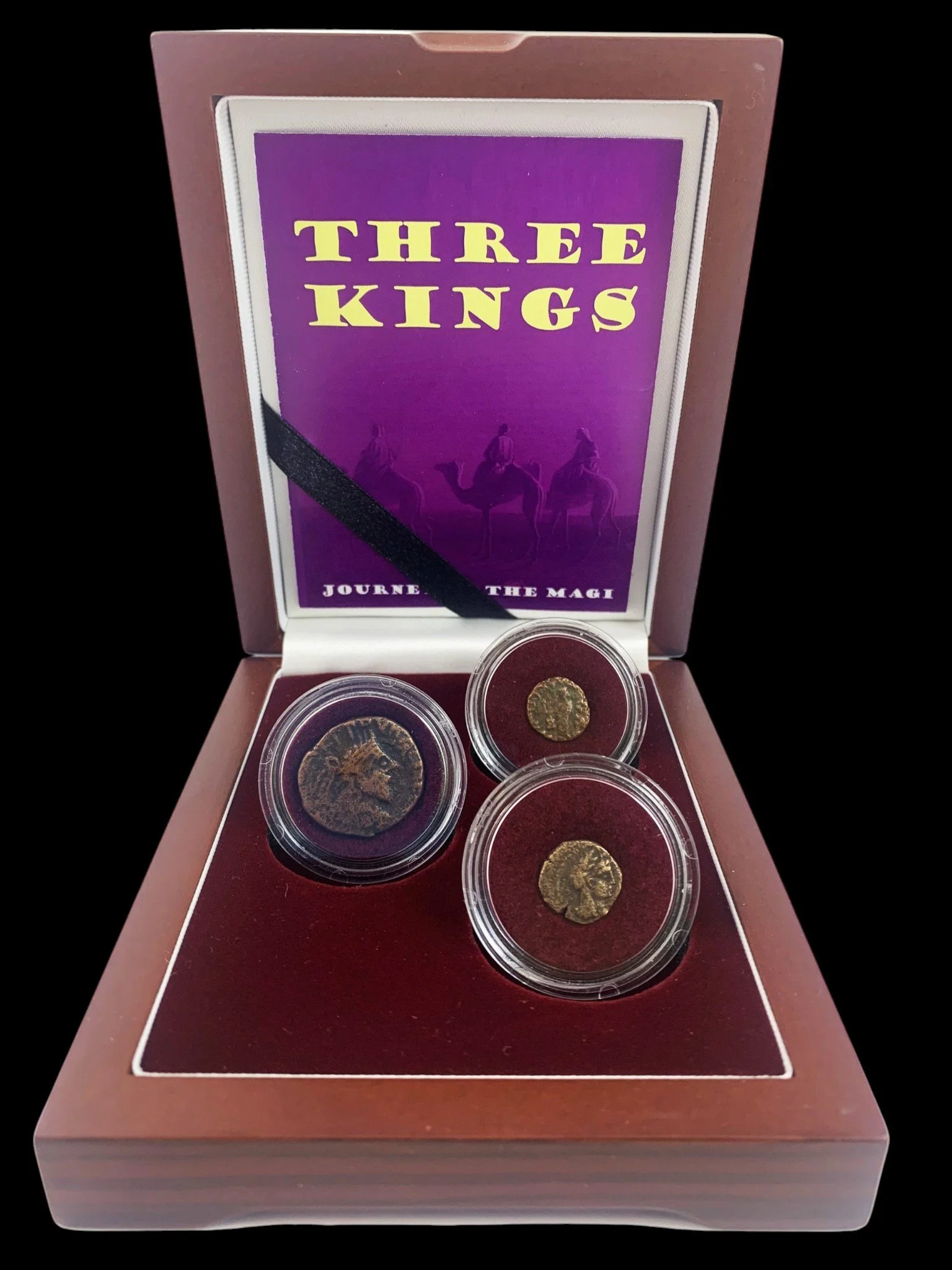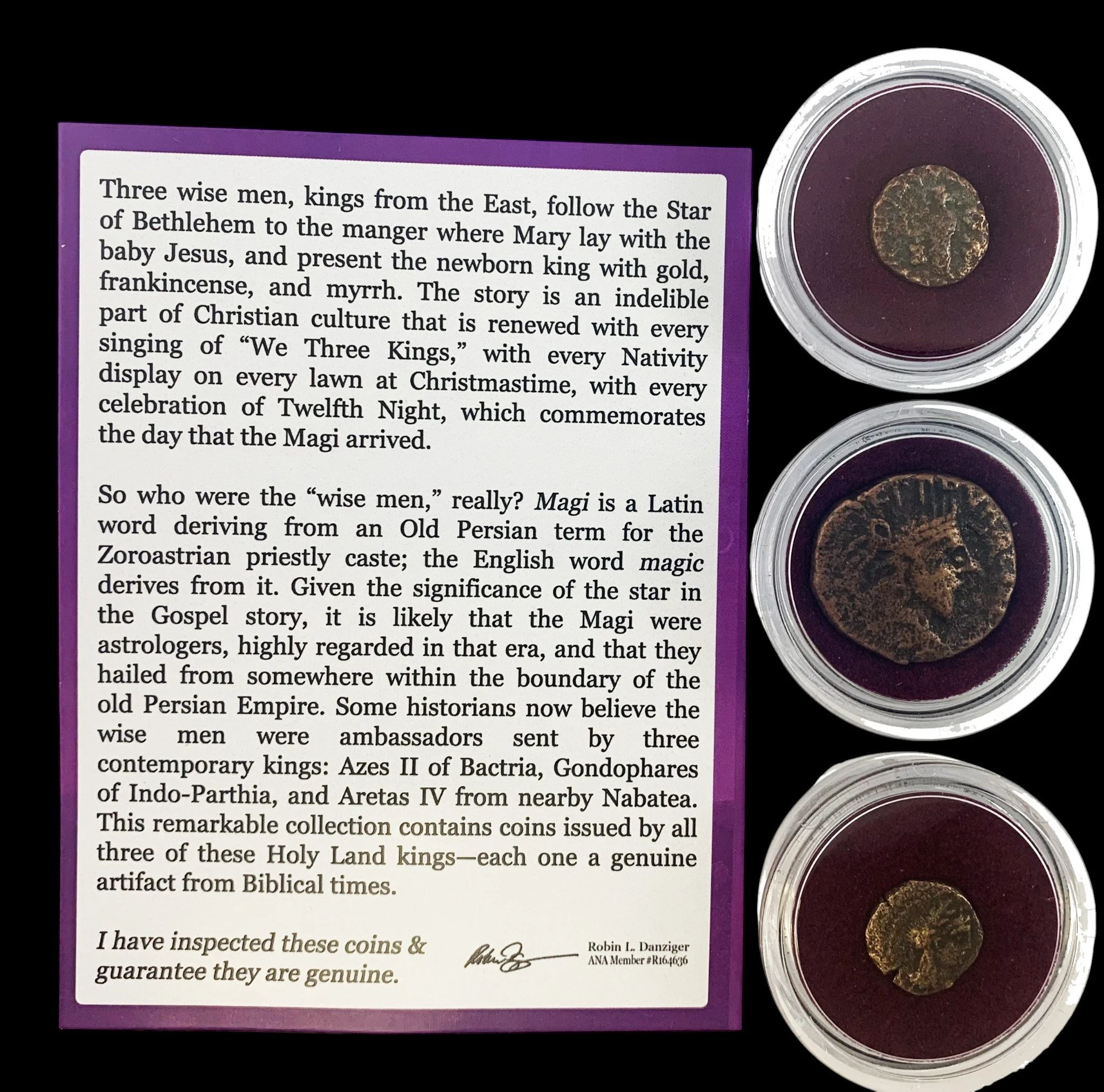 Image 1 of 4
Image 1 of 4

 Image 2 of 4
Image 2 of 4

 Image 3 of 4
Image 3 of 4

 Image 4 of 4
Image 4 of 4





Bronze Coin of the Elymais Kingdom (about 2100-2200 years ago)
The coins shown are representative examples of the grade and type, but not the actual specimens for sale. For details on NGC’s grading standards and definitions, please refer to our NGC Grading page.
This bronze drachm coin was issued by the kings of Elymais, a semi-autonomous region within the ancient Persian Empire located in what is now southwestern Iran. Minted between the 2nd century BCE and 3rd century CE, this coin represents the fascinating intersection of Persian, Greek, and local cultural influences in an area mentioned in ancient biblical texts.
Coin Description:
Front side: Likely features a stylized portrait of a local ruler with distinctive headgear (possibly a tiara or diadem), typically shown in profile with highly abstracted features characteristic of later Elymais coinage
Back side: Probably displays simplified imagery that might include religious symbols, local deities, or geometric designs with various markings that have intrigued numismatists and archaeologists
Technical Details:
Bronze alloy composition
Drachm denomination (regional standard based on earlier Greek systems)
Reference numbers not visible in description
NGC (Numismatic Guaranty Corporation) certified
Minted approximately between 150 BCE-225 CE
Condition not specified (likely Fine, showing wear consistent with circulation)
Historical Significance:
This coin was produced in the ancient land of Elam, a region mentioned in the Book of Genesis and other biblical texts. The kingdom of Elymais emerged following the collapse of the Seleucid Empire and maintained varying degrees of independence from subsequent Parthian rule. The coin is connected to scholarly debates about the true location of the Hanging Gardens, traditionally associated with Babylon but now suggested by some researchers to have been located at Susa in Elam. These bronze coins circulated in a region known for its strategic position along trade routes connecting Mesopotamia to the Persian plateau, and the markings on Elymais coins contain important historical and linguistic information that continues to be studied by scholars seeking to better understand this lesser-known but significant ancient kingdom that bridged Persian, Hellenic, and Mesopotamian cultural traditions.
The coins shown are representative examples of the grade and type, but not the actual specimens for sale. For details on NGC’s grading standards and definitions, please refer to our NGC Grading page.
This bronze drachm coin was issued by the kings of Elymais, a semi-autonomous region within the ancient Persian Empire located in what is now southwestern Iran. Minted between the 2nd century BCE and 3rd century CE, this coin represents the fascinating intersection of Persian, Greek, and local cultural influences in an area mentioned in ancient biblical texts.
Coin Description:
Front side: Likely features a stylized portrait of a local ruler with distinctive headgear (possibly a tiara or diadem), typically shown in profile with highly abstracted features characteristic of later Elymais coinage
Back side: Probably displays simplified imagery that might include religious symbols, local deities, or geometric designs with various markings that have intrigued numismatists and archaeologists
Technical Details:
Bronze alloy composition
Drachm denomination (regional standard based on earlier Greek systems)
Reference numbers not visible in description
NGC (Numismatic Guaranty Corporation) certified
Minted approximately between 150 BCE-225 CE
Condition not specified (likely Fine, showing wear consistent with circulation)
Historical Significance:
This coin was produced in the ancient land of Elam, a region mentioned in the Book of Genesis and other biblical texts. The kingdom of Elymais emerged following the collapse of the Seleucid Empire and maintained varying degrees of independence from subsequent Parthian rule. The coin is connected to scholarly debates about the true location of the Hanging Gardens, traditionally associated with Babylon but now suggested by some researchers to have been located at Susa in Elam. These bronze coins circulated in a region known for its strategic position along trade routes connecting Mesopotamia to the Persian plateau, and the markings on Elymais coins contain important historical and linguistic information that continues to be studied by scholars seeking to better understand this lesser-known but significant ancient kingdom that bridged Persian, Hellenic, and Mesopotamian cultural traditions.
























